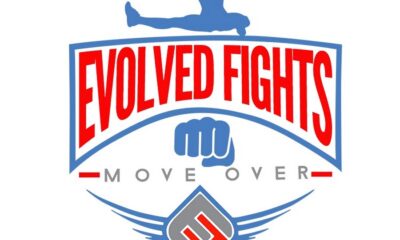Topic
Mustang Ranch: A Glimpse into America’s Iconic Brothel Culture

In the vast expanse of Nevada’s high desert, nestled among the rugged landscape, lies a piece of American history that has captivated the imagination and curiosity of many: The Mustang Ranch. Synonymous with the quintessential image of brothels in America, the Mustang Ranch stands as a testament to the complex relationship between sex work, culture, and society. This iconic brothel offers a unique glimpse into a world often shrouded in secrecy and controversy.
A Historical Perspective
The history of the Mustang Ranch is as colorful and intriguing as the brothel itself. Established in 1955 by Joe Conforte, the Mustang Ranch quickly gained notoriety as one of the most prominent brothels in the United States. Situated just east of Reno, Nevada, the ranch became a symbol of Nevada’s long-standing tolerance for legalized prostitution, a practice dating back to the mid-1800s.
Throughout its history, the Mustang Ranch has weathered numerous legal challenges, including raids, closures, and changes in ownership. In 1971, the ranch faced a significant setback when it was shut down by federal authorities on charges of tax evasion and other illegal activities. However, it reopened its doors in 1972 under new ownership and continued to operate until 1999 when it was closed again following a federal indictment.
Legalization and Regulation
The story of the Mustang Ranch reflects the broader debate surrounding the legalization and regulation of prostitution in the United States. While Nevada remains the only state with legalized brothels, the issue continues to spark intense debate and controversy.
Proponents of legalization argue that it can help protect the rights and safety of sex workers, reduce instances of human trafficking, and generate tax revenue for local communities. They point to Nevada’s system of regulation, which requires regular health screenings for workers and strict adherence to safety protocols.
Critics, however, raise concerns about the exploitation and coercion often associated with the sex industry, as well as the potential negative social and moral implications of legalizing prostitution. They argue that legitimizing the trade perpetuates the objectification of women and contributes to the commodification of sex.
The Business of Pleasure
Beyond its legal and ethical implications, the Mustang Ranch offers a fascinating glimpse into the economics of the sex industry. As a fully functioning business, the ranch operates much like any other establishment, with a focus on customer service, marketing, and profitability.
The Mustang Ranch employs a diverse staff of women who come from various backgrounds and walks of life. Contrary to popular stereotypes, many of these women are well-educated and enter the industry by choice, drawn by the promise of financial independence and flexibility.
The ranch caters to a wide range of clientele, from local residents to tourists passing through the area. It offers a variety of services and experiences, from brief encounters to more extended stays, each tailored to meet the diverse needs and desires of its patrons.
Cultural Impact
Despite its controversial nature, the Mustang Ranch has undeniably left its mark on American popular culture. It has been the subject of numerous books, films, and television shows, each offering a different interpretation of its legacy and significance.
From the gritty realism of documentaries to the romanticized portrayals in Hollywood movies, the Mustang Ranch has become a symbol of intrigue and fascination for many. Its iconic red neon sign, featuring a bucking bronco, has become synonymous with the allure of the American West and the freedom of the open road.
Yet, beneath the glitz and glamour lies a more nuanced reality—one that reflects the complexities of human nature and society’s attitudes towards sex and intimacy. For some, the Mustang Ranch represents empowerment and liberation, while for others, it embodies exploitation and moral decay.
Looking Ahead
As the debate over the legalization of prostitution continues to evolve, the future of the Mustang Ranch remains uncertain. While it continues to operate under Nevada’s legal framework, ongoing social, political, and cultural shifts may shape its destiny in unforeseen ways.
Whether viewed as a symbol of liberation or a relic of a bygone era, the Mustang Ranch serves as a reminder of the enduring allure and controversy surrounding America’s brothel culture. As society grapples with questions of morality, ethics, and human rights, the legacy of places like the Mustang Ranch will continue to spark debate and intrigue for generations to come.
Conclusion
Mustang Ranch in Nevada symbolizes the complex relationship between sex work, culture, and society. Established in 1955, it reopened in 1972, despite legal challenges. The ranch’s legacy remains uncertain, but serves as a reminder of American brothel culture’s ongoing debate.
Topic
BL Faceless: Anonymity in Digital Culture

In recent years, the term BL Faceless has emerged in various digital spheres, particularly within online gaming, social media, and virtual communities. This term encapsulates a multifaceted concept that reflects shifting dynamics in online interactions, identity, and anonymity. To grasp the full significance of BL Faceless, it’s crucial to dissect the term itself and analyze its components, contexts, and implications.
Defining BL_Faceless
BL_Faceless is a composite term that combines elements of anonymity (facelessness) with the unique branding of “BL.” While the specific meaning of “BL” can vary depending on the context in which it is used, it often refers to Boys’ Love, a genre of fiction that features romantic relationships between male characters. This genre has gained substantial popularity in various cultures, particularly among younger audiences. The faceless aspect refers to the anonymity often employed by users in digital spaces, where individuals choose to hide their identities for various reasons.
The Faceless Element
The “faceless” aspect of BL Faceless signifies the anonymity that is prevalent in online interactions. In a world where personal data and identities can be easily exposed, many users prefer to remain anonymous. This anonymity can manifest in various ways, such as using pseudonyms, avatars, or simply not revealing any personal information. The decision to stay faceless can be motivated by the desire for privacy, the need to express oneself freely without societal judgment, or the wish to explore different facets of one’s personality.
The Significance of BL
As mentioned earlier, the “BL” component often refers to Boys’ Love, a genre that explores male-male romantic relationships. The BL genre has roots in Japanese manga and anime but has since spread globally, influencing a variety of media forms, including webtoons, novels, and fan fiction. The genre is notable for its emphasis on emotional depth, complex character dynamics, and often a departure from traditional gender roles. The intersection of BL with facelessness creates a unique space where individuals can engage with these narratives while exploring their identities in a safe and judgment-free environment.
The Rise of BL_Faceless in Digital Communities
The emergence of BL_Faceless can be traced to the rapid growth of digital communities where individuals connect over shared interests, particularly within fandoms. Platforms like Tumblr, Twitter, Reddit, and various gaming forums have become hubs for discussions around BL themes, fan art, and creative expression. The anonymity afforded by these platforms allows users to engage with content without the fear of real-world repercussions.
Online Gaming Communities
In online gaming, BL_Faceless has gained traction as players adopt faceless avatars or usernames while participating in games that may feature BL narratives. Many games allow players to create custom characters, enabling them to explore identities that resonate with their personal experiences or fantasies. This trend is particularly evident in games that emphasize role-playing elements, where users can embody their characters in ways that may align with or challenge their real-world identities.
Social Media Platforms
Social media platforms have further fueled the popularity of BL_Faceless. Users often share fan art, stories, and discussions surrounding BL themes while maintaining anonymity. The ability to connect with like-minded individuals allows for a sense of community that transcends geographical boundaries. The faceless nature of these interactions fosters openness and creativity, as users feel liberated to express their thoughts and preferences without the fear of judgment.
The Cultural Impact of BL_Faceless
The intersection of BL narratives and facelessness has led to profound cultural shifts within digital spaces. These changes have influenced how individuals perceive relationships, identity, and self-expression.
Redefining Relationships
BL_Faceless challenges traditional notions of relationships by presenting diverse narratives that highlight emotional connections beyond societal norms. The genre often portrays complex dynamics between male characters, allowing audiences to explore themes of love, acceptance, and vulnerability. In a digital landscape where individuals often feel isolated, these narratives provide a sense of belonging and understanding.
Exploring Identity
The faceless aspect of BL_Faceless allows individuals to explore their identities in ways that may be difficult in their everyday lives. Many users find solace in adopting faceless personas, experimenting with different facets of their personalities without the constraints of societal expectations. This exploration can lead to greater self-acceptance and a deeper understanding of one’s desires and aspirations.
Fostering Community
The BL_Faceless phenomenon has given rise to vibrant communities that celebrate creativity and collaboration. Online spaces allow fans to share their interpretations of BL narratives, resulting in an abundance of fan art, fan fiction, and discussions. These interactions foster a sense of belonging, as users find kinship in their shared interests and experiences. The anonymity of the faceless nature allows individuals to connect with others who may share similar backgrounds or struggles, creating a supportive environment.
The Challenges of BL_Faceless
While the BL_Faceless phenomenon has opened up new avenues for creativity and expression, it is not without challenges. The anonymity that defines this movement can lead to both positive and negative outcomes.
Toxicity and Harassment
The anonymity of online interactions can sometimes facilitate toxic behavior. In some cases, individuals may engage in harassment or bullying under the guise of anonymity. This can create hostile environments that detract from the supportive nature of digital communities. Addressing these issues requires a concerted effort from platform administrators, community leaders, and users to foster a culture of respect and understanding.
Misinterpretation and Misrepresentation
Anonymity can also lead to misinterpretation or misrepresentation of individuals’ intentions or identities. Users may project their own assumptions onto faceless interactions, leading to misunderstandings. This can be particularly challenging in the context of BL narratives, where nuanced emotions and relationships are at play. Promoting open dialogue and encouraging individuals to share their perspectives can help mitigate these challenges.
Balancing Privacy and Engagement
Finding a balance between maintaining anonymity and fostering genuine connections can be difficult for some users. While the faceless nature of online interactions allows for privacy, it can also hinder meaningful engagement. Users may struggle to form deep connections with others when identities remain obscured. Encouraging users to share aspects of themselves while respecting their boundaries can help bridge this gap.
The Future of BL_Faceless
As digital landscapes continue to evolve, so too will the concept of BL_Faceless. Emerging technologies, such as virtual reality (VR) and augmented reality (AR), may further transform how individuals engage with BL narratives and anonymous interactions.
Technological Advancements
With the rise of VR and AR, users may have the opportunity to immerse themselves in BL narratives in entirely new ways. These technologies can create interactive experiences where users embody characters in virtual worlds, allowing for a deeper exploration of identity and relationships. As these technologies become more accessible, they may enhance the BL_Faceless phenomenon, creating new avenues for expression and community building.
Evolving Community Dynamics
The dynamics of digital communities will likely continue to shift as new platforms emerge and user preferences evolve. Communities centered around BL_Faceless may diversify, incorporating new themes and perspectives. As the concept of facelessness becomes more widely understood, individuals may explore their identities in ways that blend anonymity with authenticity.
Conclusion
The term BL Faceless encapsulates a complex interplay between anonymity, identity, and the exploration of relationships within digital spaces. As this concept continues to gain traction, it reflects broader cultural shifts in how individuals connect, express themselves, and navigate their identities in a rapidly changing world. Understanding the nuances of BL Faceless is essential for appreciating its impact on online communities and the ongoing evolution of digital interactions. By embracing the potential of anonymity while addressing its challenges, we can foster more inclusive and supportive spaces for exploration and creativity in the realm of BL narratives and beyond.
Topic
Utanmaz Türklere: Unpacking Identity and Stereotypes

In recent years, the phrase “Utanmaz Türklere,” literally translating to “shameless Turks,” has ignited fervent discussions across social media platforms and within intellectual circles. At first glance, the term may seem derogatory or inflammatory, but it embodies a more profound discourse surrounding national identity, societal norms, and the clash between tradition and modernity. This article aims to dissect the complexities of this phrase, examining its implications, the societal narratives it intersects with, and its relevance in contemporary Turkish society.
Understanding the Phrase: Etymology and Context
The Literal Meaning
The phrase “Utanmaz Türklere” consists of two components: “utanmaz,” meaning “shameless” or “without shame,” and “Türklere,” which refers to “Turks.” This juxtaposition raises immediate questions about the connotation of shame and its role in defining cultural identity. In many cultures, including Turkish, shame often functions as a social regulator, dictating acceptable behavior and enforcing conformity to societal expectations.
Historical Context
To fully understand the implications of “Utanmaz Türklere,” it is crucial to consider Turkey’s historical context. Turkey’s modern identity has been shaped by a complex interplay of its Ottoman past, republican reforms in the early 20th century, and contemporary challenges. The phrase often surfaces in discussions about how the values of modernity and tradition clash within Turkish society. As a result, it becomes a reflection of ongoing struggles over national identity, societal expectations, and individual freedoms.
The Cultural Debate: National Identity and Stereotypes
The Role of National Identity
National identity in Turkey has long been a topic of contention. The legacy of the Ottoman Empire, the establishment of the Republic of Turkey in 1923, and the ongoing tensions between secularism and conservatism all contribute to a multifaceted national identity. The phrase “Utanmaz Türklere” often emerges in discussions about what it means to be Turkish in the 21st century.
For some, the term symbolizes a rejection of traditional values in favor of modern, individualistic lifestyles. This shift can be perceived as liberating by younger generations, who seek to assert their identities against the backdrop of rigid societal norms. However, it also evokes strong reactions from those who view these changes as a departure from cultural heritage.
Stereotypes and Misconceptions
The phrase also touches on the stereotypes often associated with Turkish identity. There exists a perception, both domestically and internationally, that Turks should adhere to specific behaviors and moral codes. When individuals defy these expectations, they may be labeled as “Utanmaz,” reflecting broader societal anxieties about preserving cultural integrity.
In this sense, “Utanmaz Türklere” can be seen as a critique of those who challenge conventional norms, highlighting a tension between personal freedom and collective identity. This dichotomy is not unique to Turkey; similar discussions occur worldwide as societies grapple with modernity and tradition.
Social Media: Amplifying the Conversation
The Digital Landscape
In the age of social media, phrases like “Utanmaz Türklere” gain traction quickly, allowing for the rapid spread of ideas and opinions. Platforms like Twitter, Instagram, and TikTok have become arenas for public discourse, enabling users to share their perspectives and engage in debates about identity, culture, and societal values.
Social media allows individuals to articulate their experiences and assert their identities in ways that may not be possible in traditional forums. As a result, “Utanmaz Türklere” becomes a rallying cry for those who feel marginalized or misunderstood, creating a sense of community among like-minded individuals.
Emotional Responses
The emotional charge of the phrase cannot be overlooked. For many, being labeled “Utanmaz” can evoke feelings of anger, frustration, or defiance. Conversely, others may embrace the term as a badge of honor, symbolizing their resistance against societal constraints. This emotional resonance underscores the phrase’s potency in sparking discussions about identity and belonging.
Societal Critiques: Challenging Norms and Values
The Clash of Tradition and Modernity
The emergence of “Utanmaz Türklere” aligns with broader societal critiques regarding the clash between tradition and modernity. In Turkey, rapid urbanization, globalization, and technological advancements have led to shifts in values and lifestyles. Many young people embrace modernity, prioritizing personal freedom and self-expression over traditional expectations.
This cultural shift can be disconcerting for older generations, who may perceive these changes as a threat to the values that have long defined Turkish identity. The phrase “Utanmaz Türklere” serves as a focal point for these tensions, encapsulating the struggle between preserving cultural heritage and embracing new ways of living.
Gender and Identity
Gender dynamics play a crucial role in discussions surrounding “Utanmaz Türklere.” The term is often employed in the context of women who defy traditional gender roles. In a society where women have historically been expected to adhere to conservative values, the label “shameless” is frequently used to police female behavior.
For many women, being called “Utanmaz” signifies a rejection of patriarchal norms and an assertion of their right to choose how they live. This empowerment, however, can be met with backlash from conservative factions, further fueling debates about gender, identity, and societal expectations.
The Global Perspective: Universal Themes of Identity
Resonance Beyond Turkey
While “Utanmaz Türklere” is rooted in Turkish culture, the themes it embodies resonate globally. Many societies grapple with similar tensions surrounding identity, tradition, and modernity. The quest for authenticity in a rapidly changing world is a universal struggle, manifesting in various cultural contexts.
In the global conversation about identity, terms like “shameless” often serve as a lens through which to examine societal norms and expectations. Movements advocating for LGBTQ+ rights, gender equality, and cultural diversity all challenge conventional definitions of identity, mirroring the conversations sparked by “Utanmaz Türklere” in Turkey.
Comparative Analysis
In examining the phrase in a broader context, comparisons can be drawn with similar terms in other cultures. For example, terms like “rebellious,” “avant-garde,” or “nonconformist” serve analogous functions in various societies, highlighting the universal desire to challenge norms and assert individual identity.
Conclusion
The phrase “Utanmaz Türklere” embodies a complex interplay of emotions, cultural identity, and societal critique. While it may evoke strong reactions, it also serves as a catalyst for essential conversations about what it means to be Turkish in the contemporary world.
In navigating the complexities of national identity, societal norms, and individual freedoms, “Utanmaz Türklere” encourages a deeper understanding of the multifaceted nature of identity. As Turkey continues to evolve in the face of modern challenges, embracing these discussions becomes vital for fostering a more inclusive and nuanced understanding of what it means to be part of the Turkish collective. Ultimately, the journey toward self-acceptance and societal understanding is one that transcends borders, inviting us all to reflect on our identities and the world around us.
Topic
Pichuneter: Exploring Curiosity and Connection in Culture

Have you ever come across a term that piqued your curiosity but left you wondering what it truly means? Enter “Pichuneter.” This intriguing concept weaves itself through various aspects of culture, behavior, and even modern media. Its roots run deep in history, yet its relevance is more pronounced than ever today. As we dive into the world of Pichuneter, you’ll discover not only its origins and evolution but also how it shapes our interactions and perspectives in contemporary society. So buckle up as we explore this fascinating phenomenon together.
What is Pichuneter?
At its core, Pichuneter is a term that encapsulates a complex interplay of cultural nuances, behavioral patterns, and media representations. It serves as a lens through which we can examine various aspects of human interaction, both in historical contexts and contemporary settings. While the definition may vary depending on the cultural backdrop, Pichuneter generally refers to a specific way of engaging with one’s surroundings—be it through art, social interactions, or media consumption.
Defining Pichuneter
The word itself carries connotations of curiosity, exploration, and a desire to connect with others. It reflects an innate human tendency to seek meaning and understanding, particularly in areas that challenge our perceptions. This makes Pichuneter not just a term, but a gateway into understanding the broader human experience.
Historical Origins of Pichuneter
To fully grasp the implications of Pichuneter today, it is essential to delve into its historical roots. The term can be traced back to various cultural artifacts, philosophical texts, and historical narratives that highlight the evolving nature of human interactions.
Ancient Influences
The concept of Pichuneter may find its earliest echoes in ancient civilizations, where curiosity and exploration were paramount. Cultures such as the Greeks, Egyptians, and Mayans engaged in storytelling, art, and communal gatherings, reflecting a shared understanding of their place in the universe. These activities not only fostered community ties but also cultivated a sense of wonder and inquiry, laying the groundwork for what we now recognize as Pichuneter.
Evolution Through Time
As societies progressed, so too did the understanding of Pichuneter. The Renaissance era, characterized by a renewed interest in art and science, exemplified a shift towards embracing curiosity as a means of exploration. This period saw the emergence of influential thinkers who encouraged inquiry, creativity, and cultural exchange, further enriching the concept of Pichuneter.
Cultural Significance of Pichuneter
In contemporary society, Pichuneter resonates deeply within various cultural contexts. It serves as a reflection of societal values, beliefs, and aspirations.
Pichuneter and Identity
Pichuneter plays a vital role in shaping individual and collective identities. In diverse cultural landscapes, people often turn to their heritage, traditions, and shared experiences to forge connections with others. This exploration of identity is crucial for fostering empathy and understanding among different communities.
The Role of Art and Expression
Art serves as a powerful vehicle for Pichuneter. Creative expressions—be it through music, visual arts, or performance—allow individuals to explore and communicate their experiences. Artists who embody the essence of Pichuneter often challenge societal norms, provoke thought, and inspire dialogue, ultimately enriching cultural discourse.
Pichuneter in Modern Media
The advent of digital technology has transformed the landscape of Pichuneter, enabling new forms of expression and interaction.
Social Media and Pichuneter
Social media platforms are quintessential examples of Pichuneter in action. They provide spaces for individuals to share their experiences, ideas, and creativity. Through platforms like Instagram, Twitter, and TikTok, users engage in a constant exchange of thoughts and perspectives, effectively weaving the fabric of Pichuneter into the digital realm.
Impact on Consumer Behavior
The Pichuneter phenomenon extends to consumer behavior as well. In an age where information is readily available, individuals are more likely to engage with brands and products that resonate with their values and interests. The desire for authentic connections drives consumers to seek out products that align with their identities, making Pichuneter a crucial element in marketing and brand development.
Behavioral Implications of Pichuneter
Understanding Pichuneter also necessitates exploring its behavioral implications. It influences how we interact with our surroundings and with one another.
Curiosity and Exploration
Pichunete’r encourages individuals to embrace curiosity. It fosters a mindset that values exploration and open-mindedness, prompting people to seek new experiences and challenge their assumptions. This behavioral inclination can lead to personal growth and a deeper understanding of the world.
Community Engagement
At its core, Pichunete’r emphasizes the importance of community. Engaging in collective experiences—whether through cultural events, discussions, or collaborative projects—strengthens social bonds and fosters a sense of belonging. This community-oriented behavior cultivates environments where individuals feel valued and heard.
Pichuneter and Social Dynamics
Pichunete’r significantly impacts social dynamics, influencing relationships and interactions on various levels.
Bridging Cultural Gaps
In an increasingly globalized world, Pichunete’r serves as a bridge that connects individuals from diverse backgrounds. By promoting empathy and understanding, it helps dismantle stereotypes and prejudices, fostering harmonious coexistence.
Enhancing Communication
Effective communication is crucial in today’s interconnected society. Pichunete’r encourages individuals to engage in meaningful dialogues, where active listening and genuine curiosity play essential roles. This enhances mutual understanding and creates spaces for authentic expression.
The Future of Pichuneter
As society continues to evolve, so too will the concept of Pichunete’r. The future holds exciting possibilities for this phenomenon.
Technology and Innovation
Advancements in technology will likely further amplify the reach of Pichunete’r. Virtual reality, augmented reality, and artificial intelligence can create immersive experiences that allow individuals to explore diverse cultures and perspectives. This technological integration will enhance curiosity and foster a global sense of community.
Pichuneter in Education
Educational systems may also embrace the principles of Pichunete’r, encouraging students to engage in inquiry-based learning and cross-cultural exchanges. This shift could nurture a generation of learners who value curiosity, creativity, and empathy.
Conclusion
Pichunete’r is more than just a term; it is a multifaceted phenomenon that encapsulates the essence of human curiosity, creativity, and connection. As we’ve explored its historical roots, cultural significance, and implications for behavior and social dynamics, it becomes clear that Pichunete’r holds profound relevance in contemporary society.
In an age defined by rapid change and global interconnectedness, embracing the spirit of Pichunete’r can lead us towards deeper understanding, richer interactions, and a more harmonious world. So the next time you encounter this intriguing concept, take a moment to reflect on its layers—because within the essence of Pichunete’r lies the potential to transform how we perceive ourselves and others in this ever-evolving landscape of human experience.

 Nail Salons7 months ago
Nail Salons7 months agoNail Salons in Ridgewood, NJ

 Business6 months ago
Business6 months agoSkyWestOnline: Empowering Employees with Essential Resources

 Topic5 months ago
Topic5 months agoMakoshake: A Popular Model and Cam Girl

 Topic6 months ago
Topic6 months agoEvolved Fights: Where Mixed Wrestling Meets Adult Entertainment

 Topic7 months ago
Topic7 months agoEmbracing the Paradox of Retroya: Where Past and Future Collide

 Nail Salons7 months ago
Nail Salons7 months agoNail Salons in Meriden, CT

 Topic6 months ago
Topic6 months agoFruit of the Loom: Cornucopia Logo Fact Check

 Technology7 months ago
Technology7 months agoCUBVH: Elevating Possibilities and Inspiring Innovations














